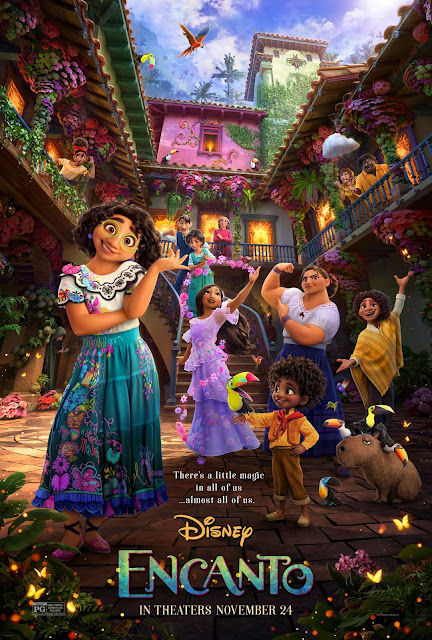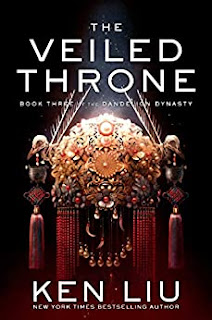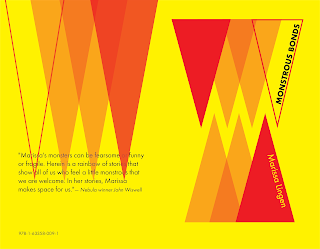A new collection of fiction and poetry about home, identity, and the need for connection
A sequel to the Latinx Rising anthology, Speculative Fiction for Dreamers contains 38 pieces of writing by authors from the Latin diaspora. The inherently hybrid nature of Latin life and Latin identity in the United States is addressed in the editors' introduction, which states, "Being Latinx, in its immense, beautiful, fractured entirety, is a kind of speculative fiction in itself."
These stories come at a pivotal moment for Latin artists of all speculative genres in the United States, which Frederick Luis Aldama's preface describes as "how the creative, mindful use of our counterfactual capacity today can imagine better ways for us to think, act, and feel tomorrow."
Part I: Dreaming of New Homes
The pieces selected for this first section deal with the characters' search for a place in the world and with their need to persist in that search when the world seems determined to exclude them.
How Juan Bobo Got to los Nueba Yores by Karlo Yeager Rodríguez, about an immigrant mother struggling to keep her son safe in a hostile city, is a dreamlike sequence of close encounters with the urgent need to belong, both as a matter of personal identity and as a matter of survival.
If he looked out of the corner of his eye, he thought he saw mountains, hazy
with distance. Every time he repeated his story to himself, they grew sharper,
greener, until one day the skyscrapers would become the mountains back home.
Those Rumors of Cannibalism and Human Sacrifice Have Been Greatly Exaggerated by Ernest Hogan, about a road trip through the reclaimed lands of Mexican America, is an incoherent, rambling rant that mistakes having an anthropologist character for the need to overexplain itself in anthropological parlance. Even worse, it's a historical revenge fantasy, which to me is one of the least interesting forms of speculative fiction.
"It's a chocolate-flavored delivery system for a scientifically
blended combination of caffeine and cannabis!"
"Keeps you awake and energetic. And feeling good! It's the working
person's best friend! And it doesn't make you pee all the time!"
Saint Simon of 9th and Oblivion by Sabrina Vourvoulias, about a single young woman trying to figure out what she wants from life while everyone around her wants to impose their own aspirations on her, is a beautifully written exploration of the meaning of self-confidence, the elusive gift of living on one's talent, and the blurry lines between need and desire.
"My success comes from how wildly I imagine and how
meticulously I execute. Not magic, not fortune, just me."
"You've always had an exceedingly high opinion of yourself."
Ancestral Lines and other Tall Tales by Samy Figaredo, a theater play about a mixed-race young enby learning to draw strength from their origins, is a bit too flat and direct, without space for layers or subtext, but sometimes a heavy truth calls for a blunt delivery.
"You may choose to show certain sides to people to survive, but
the features you conceal are still with you. The moon does not
dissolve to form a crescent: it only chooses to show us less of itself."
Quetzal Feathers by Tammy Melody Gomez is a short but touching poem where an unnamed narrator transforms into the sacred bird of Mayan culture and flies toward a land more alive than reality.
a mountain place of winged fish and fluorescent frogs,
where I have forced my dreams to take me, again and again.
Tía Abuela's Face, Ten Ways by Lisa M. Bradley, about a young woman who undergoes plastic surgery to adopt her dead great-aunt's face, does a great work of condensing into the short story form the complexities of extended family drama, the effects of technology on identity, the biopolitics of bereavement, and the oddities of human culture when seen from the outside.
Everything is swimmy. Which I guess is appropriate, since the serum
in my irises is modeled after the chromatophores in octopus skin.
Part II: Dreams Interrupted
In this section, characters are placed in situations where they have to deal with loss, be it personal, generational, or ancestral.
Jean by Stephanie Nina Pitsirilos, about a girl whose way of coping with the death of a mother addicted to consuming heroin is to retreat into the story of the death of a heroine addicted to consuming stars, draws a thought-provoking parallel between spacetime wormholes and the unsettling power of emotional triggers.
Shake up the world of the dead and there's no way of knowing how far back into
the past you've reached to understand a story. Where a wormhole's taken you.
Like Flowers through Concrete by Louangie Bou-Montes, about a park ranger searching for a proper way to honor his dead brother's memory while unexpectedly falling in love with a guerrilla gardener, is a sweet portrayal of the compassion and care with which lasting sadness can gradually learn to coexist with newfound joy.
Wyatt just preferred the outskirts of town: the trees bursting up through
the roofs of the long-forgotten rectangular buildings, the mounds of
moss and grass growing over hunks of rusted metal, the forest smashing
its way past the concrete and asphalt that had once tried to contain it.
A Flock for the Sandhill Crane by Roman Sanchez, about the spirit of Our Lady of Guadalupe watching over the Mexican nation for centuries, is a waste of an interesting idea with its poorly edited sentences, its jarring structural disjointedness, and its cartoonish oversimplification of the historical roots of inequality as if they were reducible to conspiracy theory.
They had never intended to give the world
the opportunity to begin life in the stars.
While DeLamonte kept the UN and its
citizens distracted, the capitalist class began
boarding his rockets and preparing to flee.
Fancy by Diana Burbano, a theater play about organized struggle under a patriarchal theocracy, proceeds like a philosophical debate between waves of feminism and, by extension, between their associated generations, with the topic in question being the choice of tactic of resistance.
"Fighting like you do gets people killed. Or
thrown in jail— We got other ways to rebel."
Time Traveler Intro by Eliana Buenrostro is a flash piece about the dislocating strain of having to survive as several identities in several places.
I am everywhere and split into so many directions.
Split into multitudes. I am here and not at all.
The Music Box by Sara Daniele Rivera, about a grotesquely commodified soprano singer, is the curious type of science fiction that picks a metaphor and plays with taking it literally, in this case the metaphor of being robbed of your voice.
If she could, she would sing in Spanish.
If her mouth could still shape the words.
Part III: My Life in Dreams
The unifying theme in this section is the effect that the wondrous element (either technological or magical) has on human beings when it is integrated into the ordinary actions of daily life.
My First Word by William Alexander, about a community of garbage collectors in a world where speech produces trash, is an intriguing example of how language can be a tool of social exclusion, but also of survival.
The boy uttered a refrigerator. He didn't seem to have any trouble
producing an entire fridge from inside his distended jaw. It was
dark beige. It thunked against the rooftop, several times his size.
Do as I Do by Pedro Iniguez, about a trek across the Mexican countryside during a robot apocalypse, should have had more retouches in the editing stage, but is still effective at conveying the strength to keep love alive when all seems lost.
"He had to come out of hiding because food was running short. That's when
I met him. I was scavenging an old pet store for food. It had been looted
long ago, but there he was, frightened and joyous all at once. Like me."
The Clarification Oral History Project by Pedro Cabiya is written in the style of a promotional brochure by a nonprofit organization entrusted with documenting first-hand testimonies about a mysterious event that transformed all Haitians into white people.
After the Clarification nothing has been the same anywhere in
the world. Perhaps one of the most enduring and far-reaching
results of the Clarification is the final disintegration of Western
moral paradigms and the bankruptcy of its cultural leadership.
Curanderas in the Ceiling by Alex Temblador, about a woman undergoing spiritual healing at the same time as gynecological surgery, is one of those cases where an ending open to ambiguous interpretations hurts the story instead of helping it.
I want to say something, but in that moment, I can feel
the blood rushing from my head, my vision blurs and
begins to fade. I can hear the nurse speaking in tongues,
Mamá crying, and the doctor yelling at someone.
Dream Rider by Daniel Parada, a comic one-shot about an agricultural festival in a Mesoamerican-themed future, has an interesting visual design, but it doesn't really have a plot, and feels more like a prologue for something longer.
It is only once a year, but on this day, the dimensions
of the living and the dead are weakened. This creates a
liminal space accessed by lucid dreaming via a special
liquid compound. On this day the dry and wet worlds party.
Spooky Action at a Distance by Laura Villareal is a poem where the narrator meditates on the threads that tie us to each other.
people gushed about Pluto's heart
until they knew it was broken.
BlindVision by Grisel Y. Acosta, about an extreme form of augmented reality that takes over users' muscles to guide their daily movements for them, starts as a very interesting thought experiment and then derails into something resembling a spy drama that promises answers and gives none.
They look like glasses to block the sun, the kind
you get at the doctor, except for the flicker of
light at the center of each lens, like a blue, green,
or red signal, slowly dying, somehow lingering.
Part IV: When Dreams Awaken
This section explores that liminal moment when the realm of fiction brushes against the realm of reality, and the inhabitants of our stories somehow cross over into our side.
The Chupacabra Next Door by Roxanne Ocasio, an urban fantasy/shifter romance about a schoolgirl who accidentaly gets involved in a secret war against evil, is a great example of the power of legends to rewrite collective memory: chupacabras are actually a very modern phenomenon, arisen in the late 20th century, but this story succeeds at believably recasting them as mythical creatures from precolonial times.
Wings and tail drooped as if empty of bone and muscle.
His strange blue eyes lost all of their color, becoming
a sickly gray. How could this be the same person
who had eaten dinner at her house twice this week?
An Adventure of Xuxa, La Ultima by Reyes Ramirez, about a wandering warrior who visits town after town to warn them of an oncoming zombie horde, is a fast-paced adventure with serious questions about humanity's right to survive.
"The gods, in all their genius, ended our reality
with the dead returning to feast on the living, our
collective history catching up to confront us."
Night Flowers by Stephanie Adams-Santos, about a family of survivors that flee from a fire and walk through a dangerous jungle full of hungry terrors, abounds in pitch-perfect metaphors that don't let the tension subside for one moment.
in the vicinity of sleep one begins to
doubt the shape and size of what is true.
Alma y Corazón by Julia Rios, about a former demon slayer now institutionalized as a mental patient, takes the tropes of superheroism and carefully molds them into a more intimate form. There is an admirable depth of compassion in how this story suggests a different way of saving a life.
She needed to be strong for her sister. And
strength didn't always mean roaring ferociously.
Sometimes it meant being quietly assertive.
Ella by Frederick Luis Aldama, Fernando de Peña and Rodrigo Vargas, a comic one-shot about biomechanical surveillance in a totalitarian maquila, has a worthy premise, but is visually unpolished and structurally confusing.
I wake. I roll over. I'm connected. I'm tentacled.
Two-Bullet Cowgirl Blues by Steve Castro, a poem about a tough girl in a tough town, is brief and direct, but with a whole world of revelations at the ending.
She arose early enough to wring the rooster's neck while it slept.
A Mirage by Steve Castro, about a domestic discussion on what to have for dinner in space, is written in flash form, and that hurts the story. The sheer amount of background exposition that the characters have to insert in each line of dialogue demands too much credulity of the reader, and the abruptness of the ending makes the whole piece feel directionless.
"Didn't you tell me that dodo burritos were your favorite,
and that your mistress loved goat-cheese empanadas."
The One by Steve Castro is another flash piece, this time about a world-ending cataclysm, and it fares better in its use of the form to paint a general image in the appropriately broad strokes it needs.
The fire was so massive and intense, its flames reached
up to the heavens and incinerated the earth's moon.
Grave Talk by J. M. Guzman, a surreal exploration of a literally living city, is by far the most difficult piece in the book. I have no idea what it means, but it's beautiful.
There were violet hearts encased in the calcified
ceiling, oozing black oil, pulsating irregularly.
Engineering the city with their tenuous hold.
Part V: Dreams Never Imagined
The anthology reserved the most creative pieces for its last section, which contains some truly innovative concepts that push forward the frontiers of speculative literature.
A Dangerous Wand by Nicholas Belardes, about a glassblower who becomes fascinated by a newcome stranger with mysterious intentions, is a tragic take on the allure of danger.
She said in our native tongue that Mr. Tiré was a
brujo, that he was here to melt the trees and consume
both sand and animals and pull the water from
below us and evaporate what was left into the sky.
Madrina by Sara Daniele Rivera, about stranded astronauts who resort to telepathic time travel to try to chart their way back home, not only has a thought-provoking premise related to the ethics of anthropological research and historical memory, but also leaves the reader with a bittersweet new sensation: the nostalgia for a place not yet seen.
"It's like I was born in a gap. Like my whole life is a
transition between people who will have true lives."
Bad Sun by Scott Russell Duncan, a flash piece about a boy sneaking out to play under forbidden sunshine, has almost an air of ancient myth in how it wields imagery and primal fears.
Knocking came from the door. A man in a hat
that had candles circling it talked to Mom.
Beacon by Scott Russell Duncan, a flash piece about a sinister bishop obsessed with people's inner light, is a curious reversal of the colonial gaze on Indigenous religions.
Their fathers and mothers lit candles to their spirits,
then more candles so they could see to light even
more candles, but it was never enough, darkness
came every night, inside, outside, everywhere.
Her Number by Scott Russell Duncan, a flash piece about an accountant who finds mystical meaning in financial datasets, is a weird but entertaining portrait of gradually creeping obsession.
Wendy did her numbers. The patterns came slowly.
Numbers formed pictures at times. At first like looking
up in the clouds and seeing people. Or a paw. Or a tail.
Old Folks by Scott Russell Duncan, a flash piece about a retirement home running an organ harvesting program, is quite effective at beginning in a warm, friendly tone and ending with a wham.
"Don't be so greedy, Pearl. Wait your turn. He's here for everyone."
Soledad by Ezzy G. Languzzi, about a desperate housewife who asks for a wish from an enchanted bottle of mezcal, is a hilarious vignette of revenge.
"The plant warmed, wrapped its plump, velvet-like
leaves around her, and protected her from the cold. It
cradled her and lulled her into a deep, deep sleep."
Contraband by Patrick Lugo, a comic one-shot about a reluctant smuggler doing a favor for her brother in a cyberpunk dystopia, makes excellent use of silent panels to tell its plot and of dialogues to land the punch of its reveal.
"Oh, what's that? Is that what everyone calls 'papers'?"
The ENCRoach Program by Grisel Y. Acosta, a poem about coerced espionage via insect wetware, tells a lot more than it shows, and ends up sounding more like a dry manifesto than like an artistic work.
my enslavement, the anvil on my back,
forcing me to steal words from the same population I steal food from
Homebound by Tabitha Sin, about the slow, bureaucratic genocide of immigrants in a future flooded Manhattan, leaves a chilling impression of how easy it can be to normalize the unacceptable. It offers a sobering reflection on whether immigration is really worth all the hatred and the broken ties. As the last story in the collection, it closes resoundingly.
I didn't know if I was heading home or leaving it, but
at least I had someone who felt like home by my side.
As regards wordcraft quality, this anthology is rather mixed. But in thematic breadth, historic relevance, and opportunity for recognition of both established and up-and-coming creators, this is a milestone. There's material here for every taste: you may love the parts I didn't, and that's one of the strengths that make this book very recommended.
POSTED BY: Arturo Serrano, multiclass Trekkie/Whovian/Moonie/Miraculer, accumulating experience points for still more obsessions.
Reference: Hernandez, Alex; Goodwin, Matthew David; and García, Sarah Rafael [editors]. Speculative Fiction for Dreamers, a Latinx Anthology [Mad Creek Books, 2021].
















